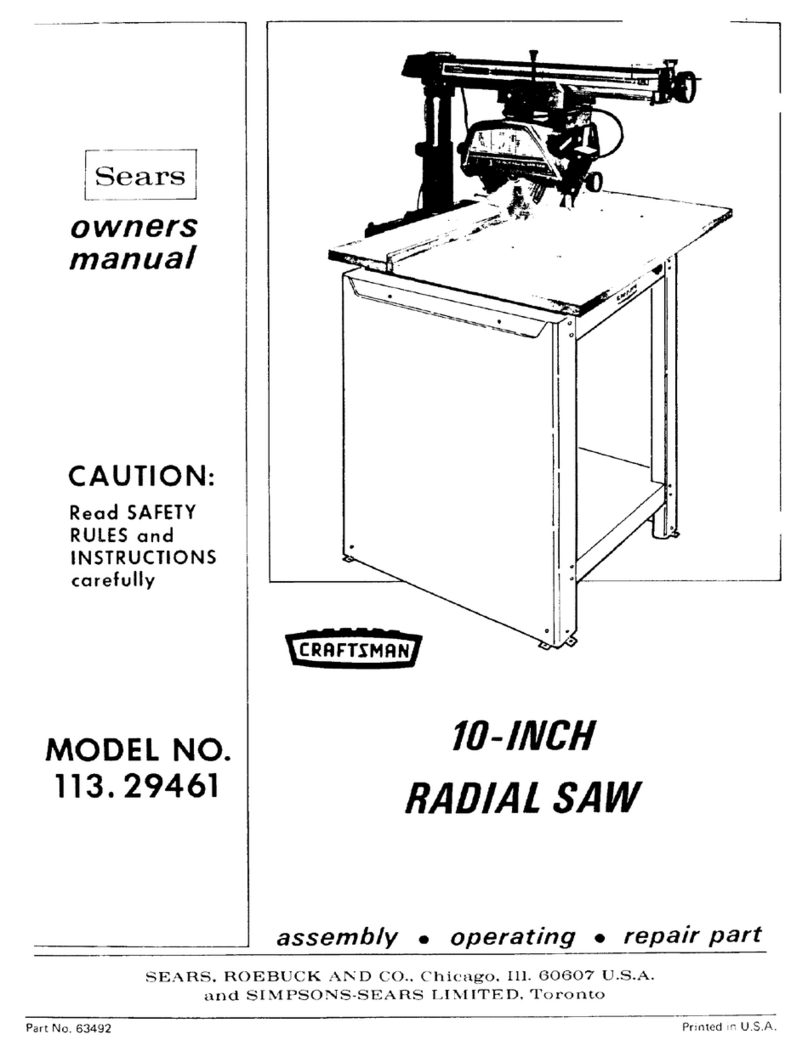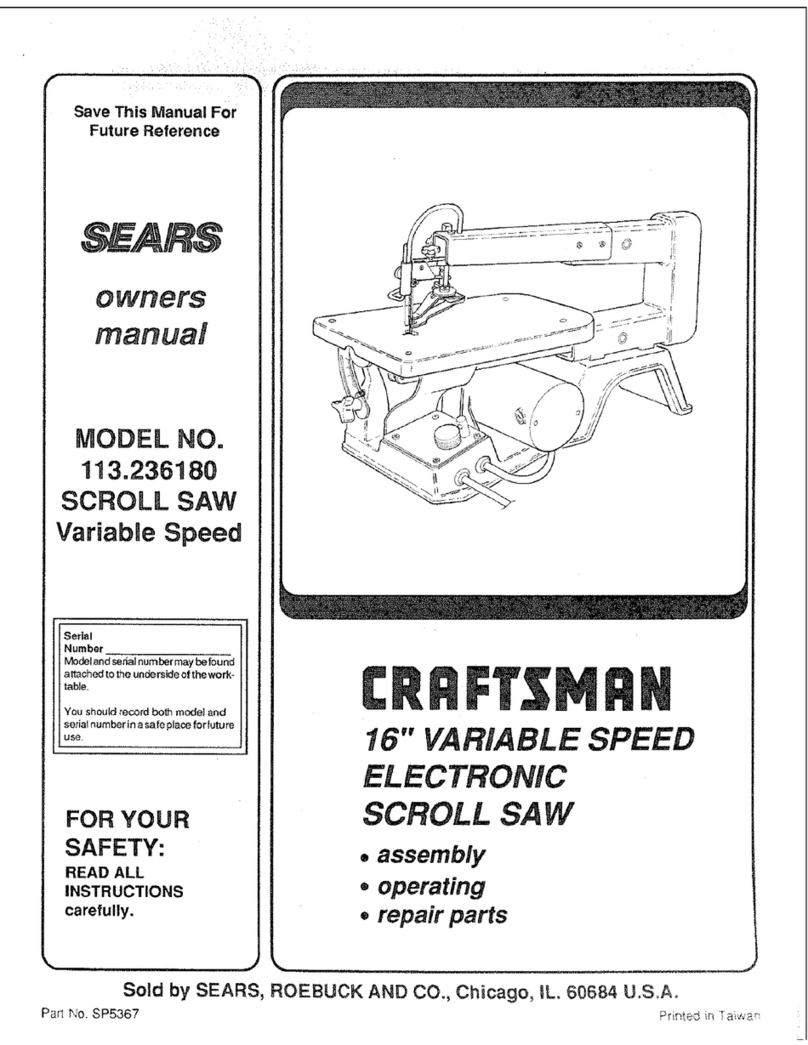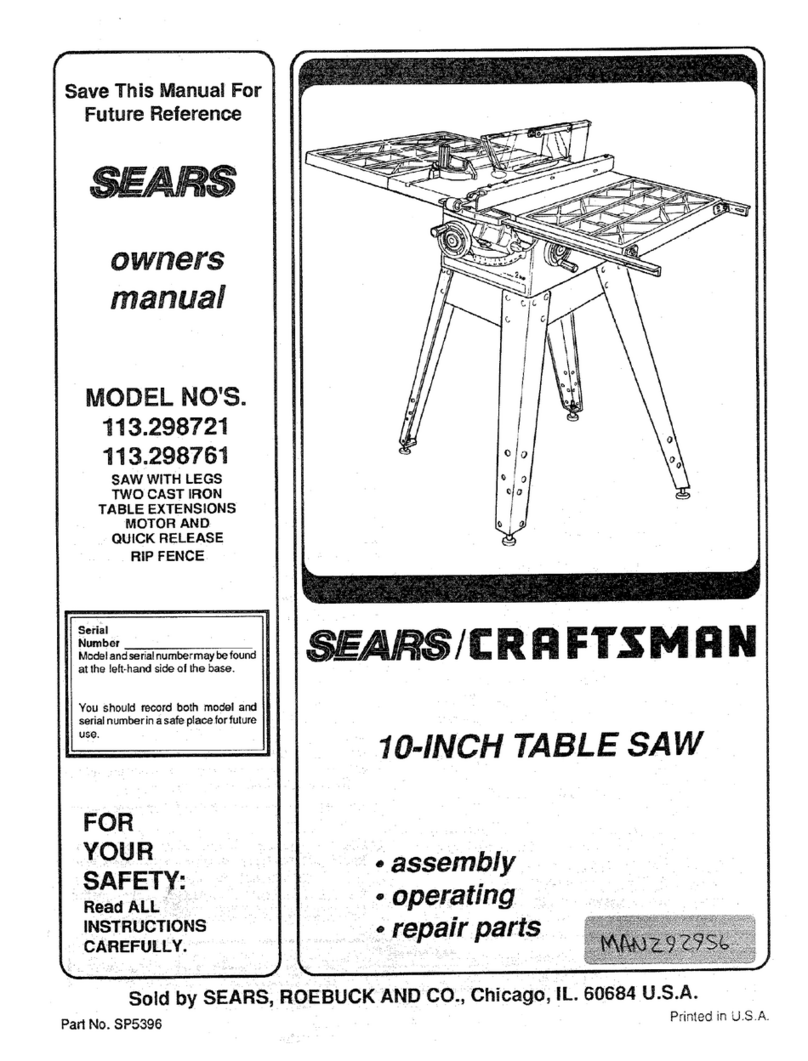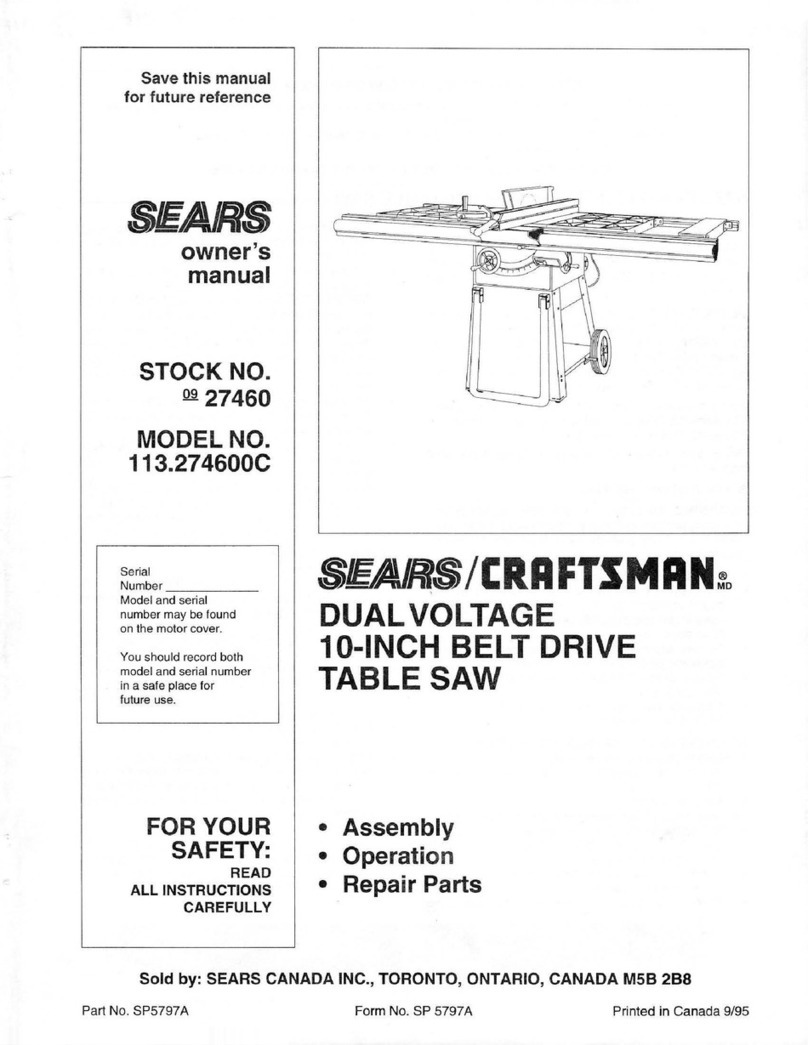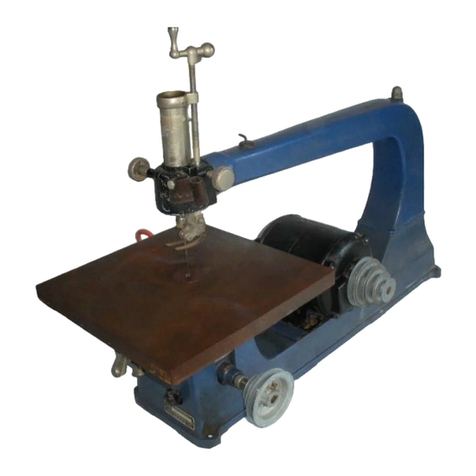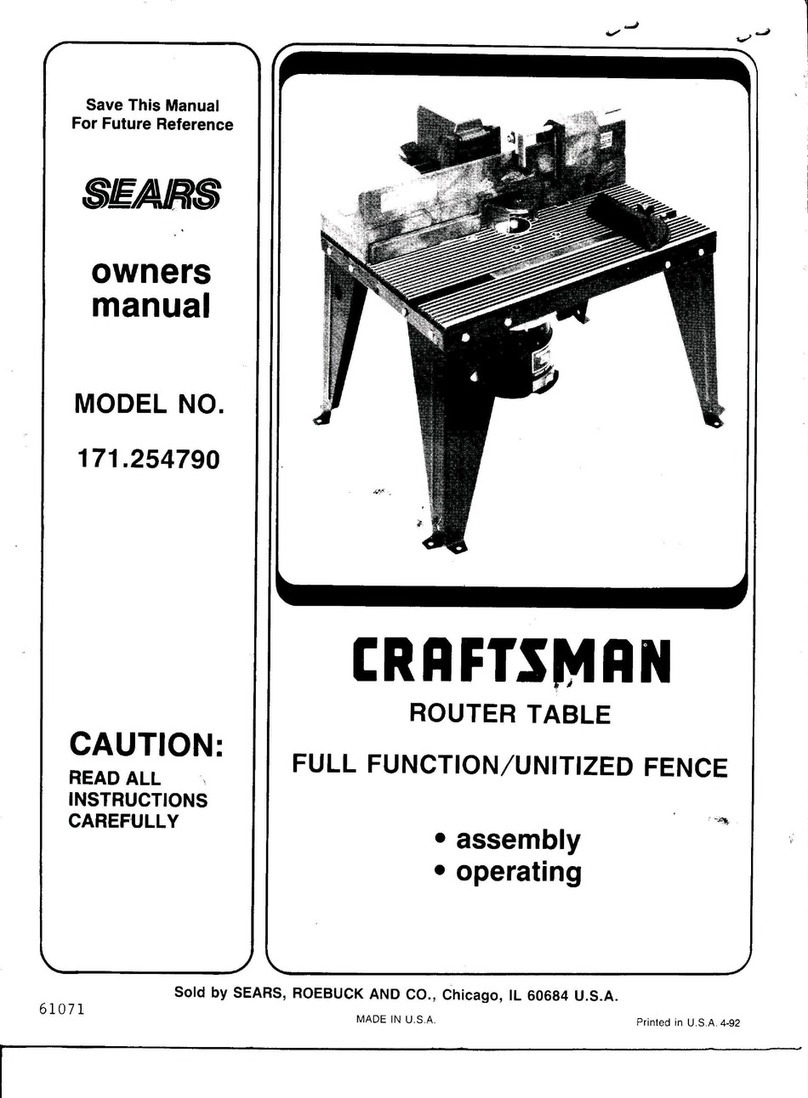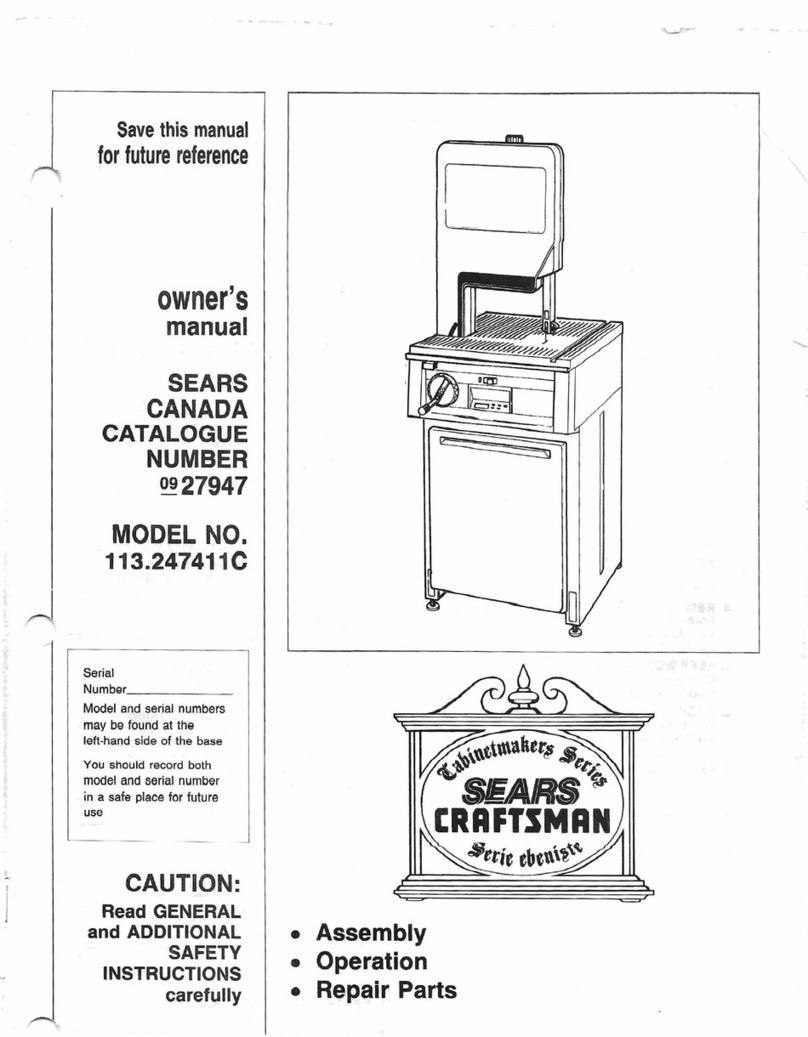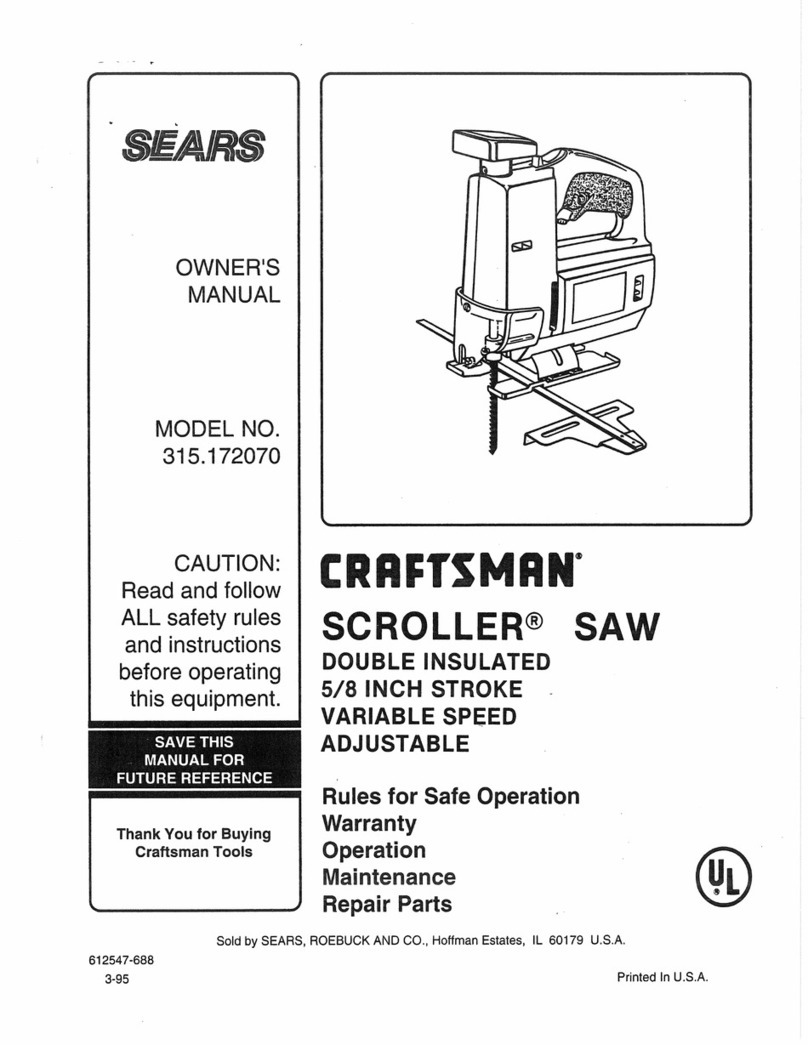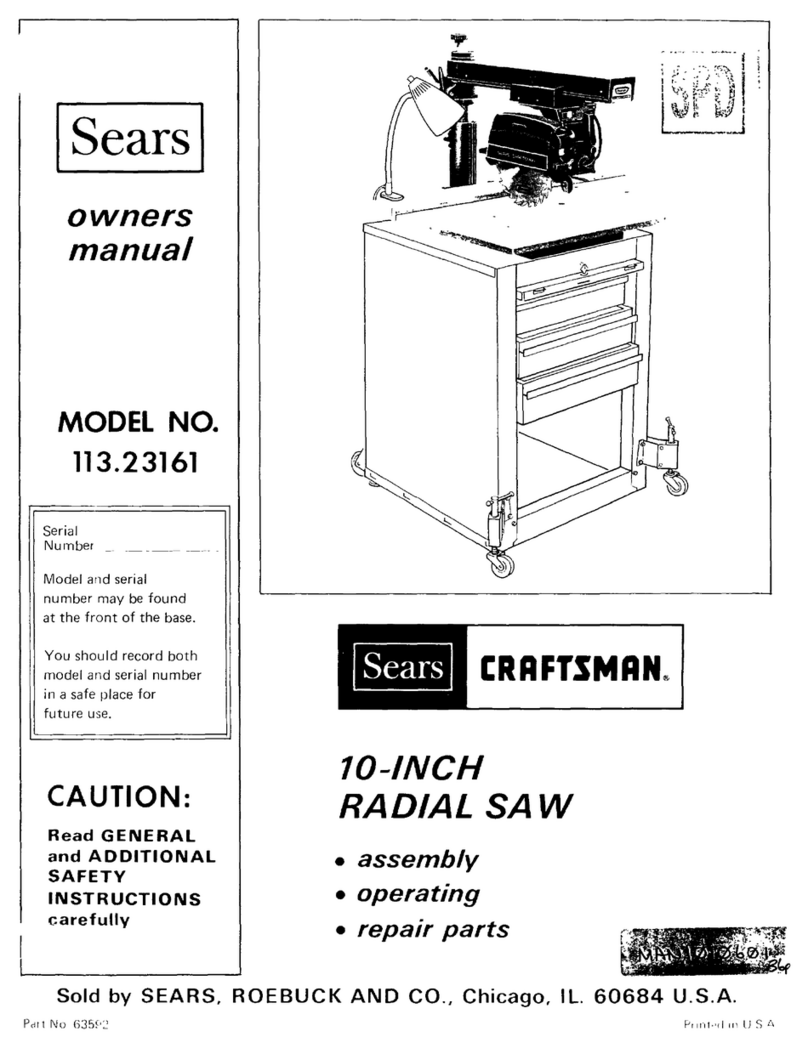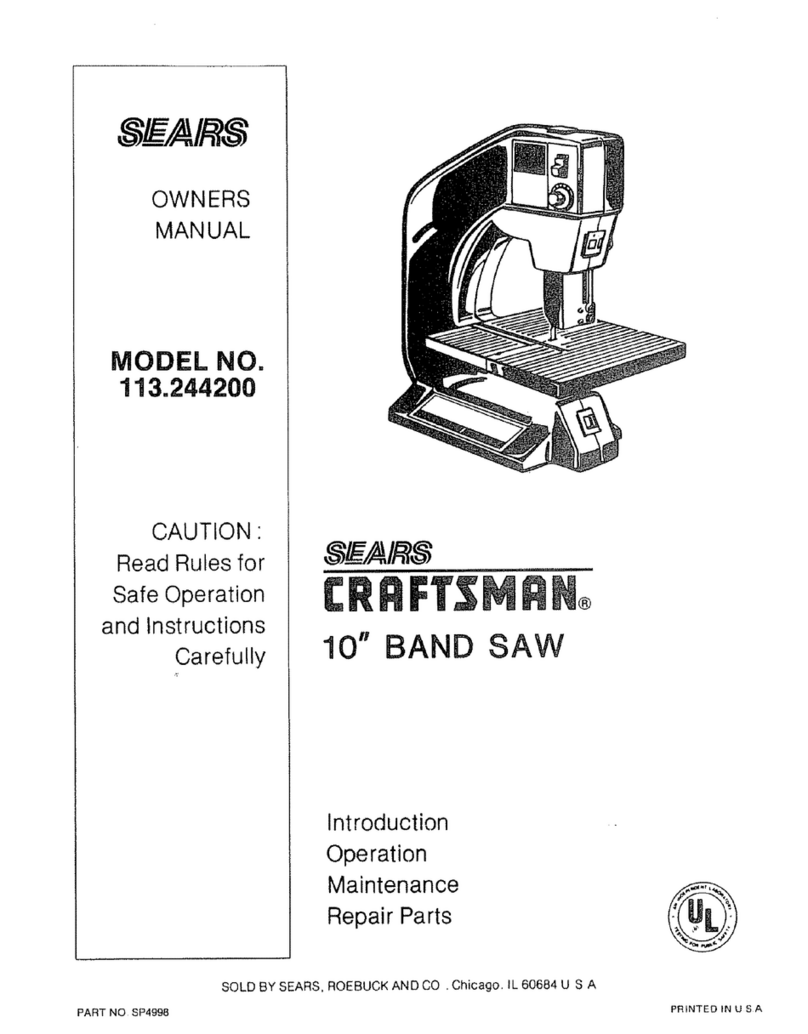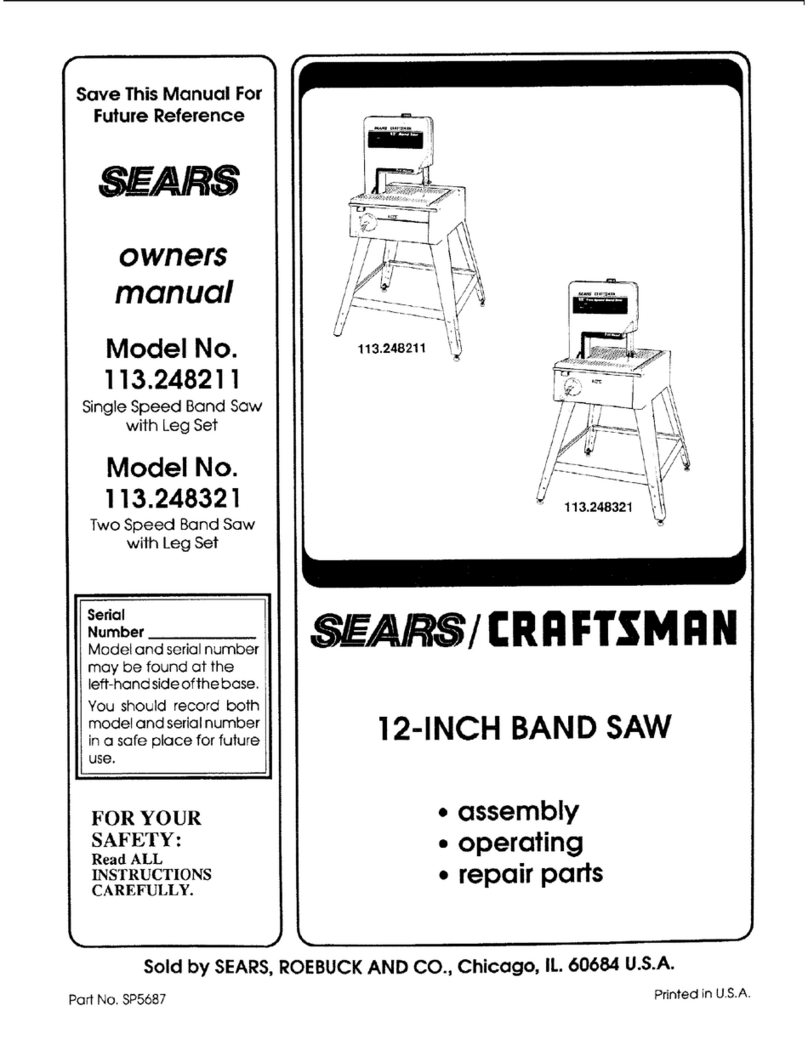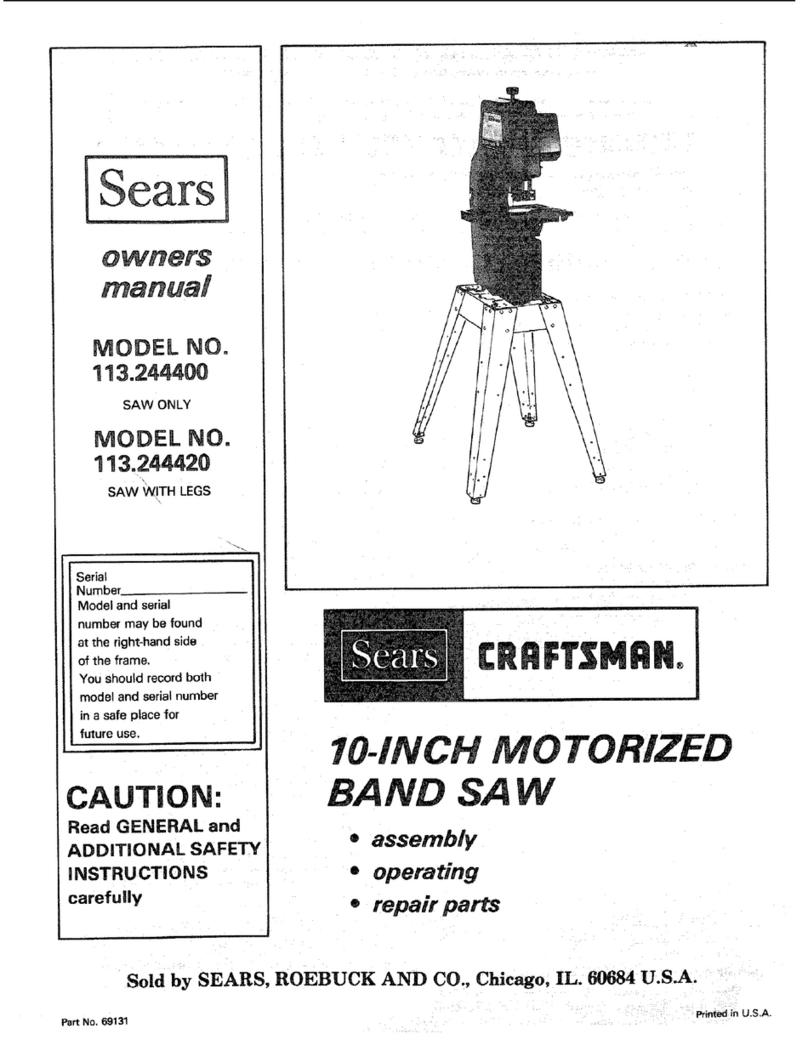-
above be sure to specify the shaft diameter of your
motor. Install the motor sothat the direction of rota-
tion of the Drive pulley is counter-clockwise when
viewed from the pulley side of the tool.
CONTROtS:
The table may be tilted from a level position to 45
degrees forward, after loosening the table tilt lock
with the handle provided.
The degree of tilt is shown on the calibrated trun-
nion scaleby . pointer asshown in figure l.
The upper g,rid. arrembly may be raised and
lowered to accommodate material of various thick-
ness after loosening the blade guide elevation lock
knob shown in 6gure l.
The blade thrust roller arsemblies and the lateral
guides in both the upper and lower blade euide
assemblies
may be reset after the set screw holding
each unit has been backed out several turns.
ADJUSTftTENTS:
This band saw was completely checked and tested
under power at the factory. Rough handling in ship-
ment may have caused some misalignment during
transit. Following are several points which might be
checked to insure proper operation.
The table should be square with the blade when the
pointer indicates zero on the trunnion scale. If this is
not the casethe tool will not produce accurate cuts
when set aeeording to thi,srcalc.-€orectionsmay be
made by resettingthe table squarewith the blade (use
an accuratesquare) and then readjusting the pointer
to the zero mark on the scale
by loosening the screw
which holds the pointer to the tool.
cover near the blade tension adiusting knob. The
cover may be removed for checking tension or t€'
placing blades after removing the three knobs directly
opposite the cover retaining nuts shown in 6gure l.
Tension adjustments for the variouswidth blades may
be made according to figure 2.
To remoye or replace a blade, remove the front
cover and the set screw in the table slot. Release the
tension until the blade may be slipped off easily. In-
stall the new blade with the teeth pointing down and
away from the drive pulley and apply the correct
tension. Turn the pulley forward by hand for at least
a dozen revolutions or more. Watch caret,,.'^ry
to see
that the blade tracks in the same spot consistently.
If the blade tends to ride off the wheel, two adjust-
ments are provided to return the blade to its proper
track at the center of the drive wheel.
For minor adjustment of blade tracking difficulties,
the blade alignment adjusting knob shown in figure
I may be turned slightly in or out causing the rear
idler wheel to pivot and retrack the blade. If this ad-
justment is not sufficient the shaft on which the up.per
idler wheel is mounted may be moved toward ot
away from the frame. It is held in place by the
square head screw in the casting over the shaft. Be
certain that this screw is securely tightened after any
adjustment of the upper idler wheel.
Check the blade for correct tension before re-in-
stalling the cover. Replace the set screw in the table
slot.
Blade guide assemblies are provided both above
and below the. table to support the blade against
lateral and direct thrust. The roller type guides be-
hind the blade should be set approximately | /64 inch
from the blade edge. The blade should touch these
rollers only when cutting, and not when the saw is
running free. The lateral guides should be set as
close as possible to the blade without touching. When
viewed from the side they should be in such a position
that if the blade is pushed against them, the flat sur'
face, and not the teeth will ride the guides. These
Iateral guides should be checked often and refaced
and reset when necessary, to keep them close to the
blade.
When the saw is turned by hand, or when running
free under power, the blade should track smoothly on
all three wheels, and should touch none of the guides,
upper or lower.
The complete lower guide assembly is held in place
by " set screw through the frame casting and may be
adjusted as a unit after loosening this set scre!r'.
After making any adjustment on the Band Saw,
check carefully by turning the mechanism by hand
several times before applying power.
BIADE:
Following are several common causes of band saw
blade breakage. Avoid these situations by frequently
ADVANCE
WASHER
TOTHISPOSITION
TO
APPTYTHE
NECESSARY
TENSIONFOR 3/I
INCHWIDE
BIADES.
WITH
WASHER
AT THIS
POSIIIONPROPER
TENSION
HAS BEEN
APPTIED
FORBOTH
3/r6
AND r/r INCHBLADES.
FIGURE 2
A stop screw with lock nut may be found projecting
from the lower table surface over the frame casting.
This screw when properly set will allow accurate
return of the table to a true le.rcl position after it has
been tilted for an angular cut.
The proper tension for the 3/ | 6, | /4, or 378 inch
wide blades recommended is shown on the blade
tension indicator. This indicator is just inside the

